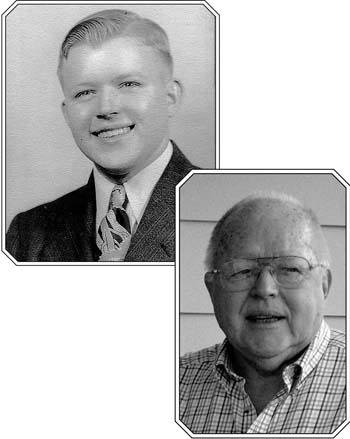By Rita Larom
“If it hadn’t been for my high school biology teacher, I would never have considered going to medical school,” said Lopez resident, Gerhard Hoffman. “As the son of German immigrants, college seemed unlikely.”
Hoffman was born in 1930, in Sheboygan, Wis.
His father had been sponsored to come to America by a family relative and was employed by the Kohler Company.
While Hoffman was still an infant, Kohler employees went on an extended strike so the family moved to Jamestown, N.D., where his father worked in a creamery as buttermaker.
Young Hoffman found summer employment in creameries from the age of 14 and throughout his school years.
At sixteen he had his own truck route delivering milk, ice cream, and beer.
“During World War II, help was scarce. I could hold the creamery job and shock wheat and oats after hours on farms,” Hoffman said.
Both of Hoffman’s parents spoke with a heavy German accent, so he was harassed during the war years.
“Calling me a Nazi led to fights,” Hoffman said. “I was told not to start a fight but not to let myself get beaten up. I learned a lot about racism even though I was white.”
There was a lack of money everywhere during the depression.
On one memorable occasion while living in Jamestown, Hoffman, age six, was sent to the store with a dime in his mitten to buy a loaf of bread.
When he got to the store, he couldn’t find the coin.
“The following spring,” Hoffman said, “I found the dime in melting snow on the sidewalk leading to our house.
It was too late.
The spanking was long past.”
At sixteen, Hoffman moved to Everett, Washington, with his family.
“I didn’t want to move,” he said, “but I was very glad we were away from the winter blizzards and summer heat and humidity. The mountains and forests reminded my folks of their home in Germany. I thought the mountains were clouds as we drove toward them. I couldn’t believe land would be sticking up that high.”
Hoffman had planned to go into the creamery business after high school graduation.
“My most encouraging teacher, biologist Andy Holland, told me I should be a doctor,” he said. “He helped me obtain scholarships to Everett Junior College for two years. It was a surprise to learn he was living on Lopez when I moved here. He was the kind of teacher and mentor that many students need.”
Hoffman transferred to church-based North Central College, in Naperville, Illinois.
Following their outstanding pre-med program, Hoffman was accepted by the University of Washington Medical School.
A two-year draft for eligible men to serve in the military was in effect during the Korean War.
Hoffman obtained a deferment while he was in college and medical school.
“To fulfill my military service,” he said. “I spent 6 and a half years in the U.S. Public Health Service that provided care to the Coast Guard and Merchant Marine. For six weeks, I was on a Coast Guard ship in the North Atlantic that gave navigational aid to all trans-Atlantic flights including Kruschev’s legendary trip to the U.N. when he pounded the desk with his shoe.”
Hoffman completed his radiology residency at Staten Island, New York, and a fellowship at Columbia Presbyterian Hospital in upper Manhattan during his service time.
During his first marriage and with four children, Hoffman went into private practice in Mt. Vernon, Wash., for 20 years.
After selling the practice, Hoffman became Medical Director of Radiology at Magic Valley Regional Medical Center in Twin Falls, Idaho, for ten years.
“I obtained licenses in six states and did locum tenens work after retirement.” Hoffman said. “Since I had been a solo practitioner, I appreciated their need. I liked filling in for doctors who could not leave their practices otherwise. It was delightful to practice radiology without the stresses of personnel and paperwork.
“I started with plain X-ray film, G.I. and kidney studies, some cancer therapy, and isotope imaging,” Hoffman said about his specialty. “The field rapidly moved to using ultrasound, CT, MRI, and PET scans. Continuing education courses kept me extremely busy but it was always stimulating to learn from the wizards in those fields.
“I bought property on Lopez in 1966 and had a cabin built,” Hoffman said. “It was accessible, and a delightful change of pace. The beauty here is very special. I met and married my second wife, Rita, in Twin Falls, we expanded the cabin and moved here in 1992. The friendships and activities on the island add to the richness of living here.”
“Faith, family, and friends give meaning to my life and its vagaries,” Hoffman concluded. “Happiness requires peace with oneself and the discovery of joy and humor in life as it really is.”
—This is my last regular column. My appreciation is extended to all who were interviewed during the past three years and an extra thank-you to my readers for their encouragement.



